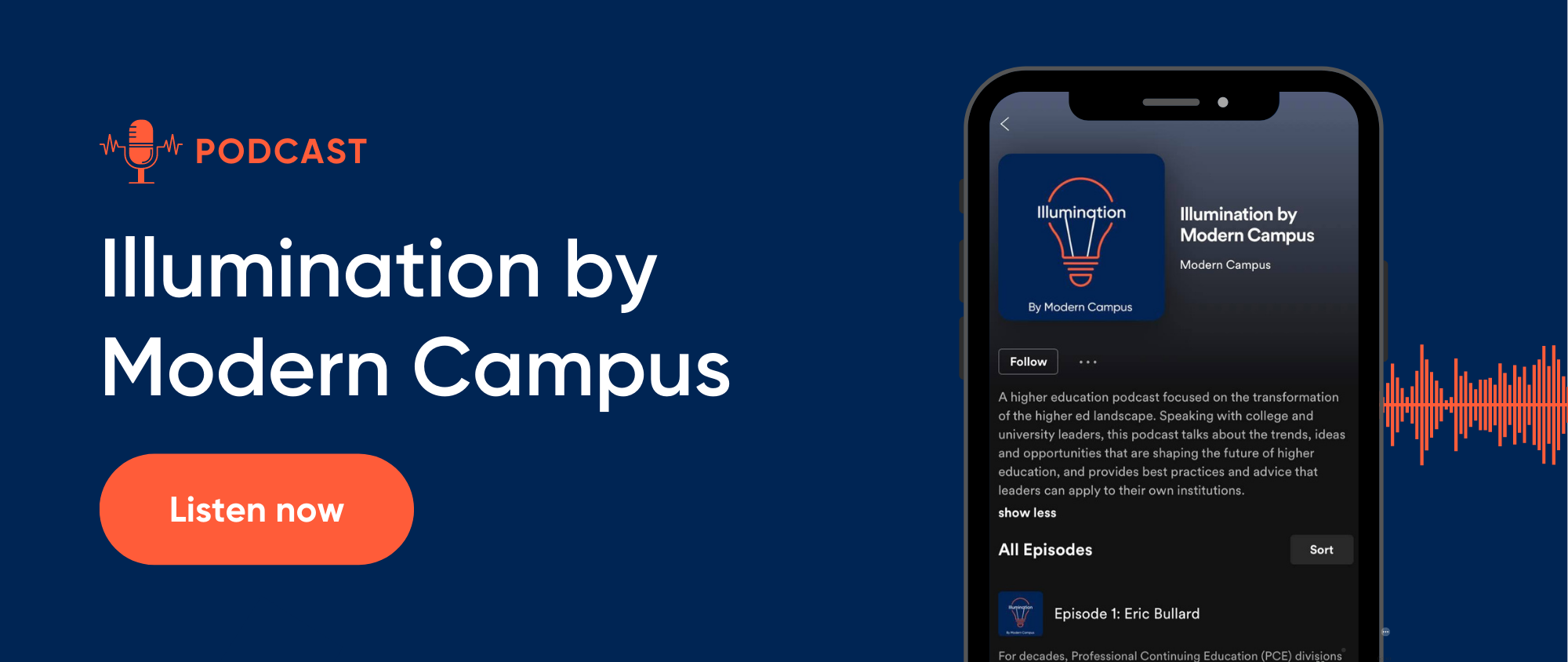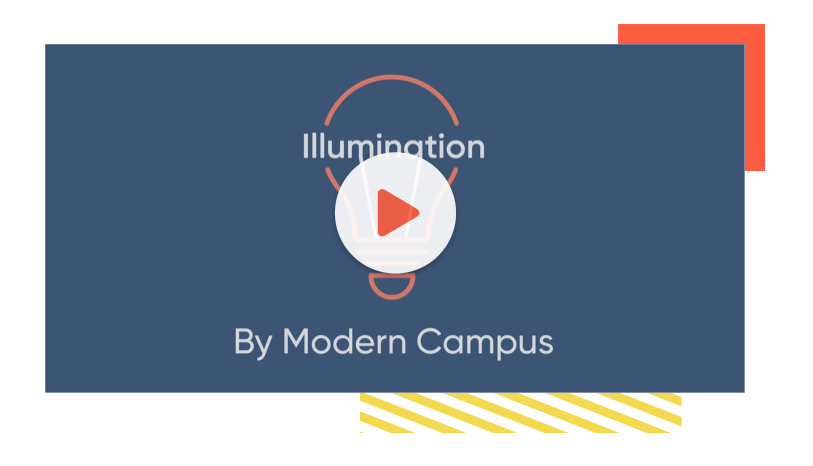Published on
Meeting Learners’ Needs in Professional Continuing Education Through Centralization

When it comes to serving adult learners, Professional Continuing Education (PCE) is the gateway to getting these learners in the door. To best serve these learners, institutions have to look to at their current model to see whether a centralized or decentralized model is best for them. In this interview, Michelle Fach discusses the difference between the two models, their impact on business and which model can best serve non-traditional audiences.
The EvoLLLution (Evo): Could you briefly describe the difference between centralized and decentralized continuing ed models?
Michelle Fach (MF): With a centralized Professional Continuing Education (PCE) model, the approach is designed to meet the needs of non-traditional learners—learners who are looking for more flexible and fluid opportunities and wanting to meet the requirements for smaller types of credentials. And these learners may or may not have any sort of post-secondary experience.
Centralized departments serve as a doorway into the institution, specifically for adult learners. It provides a one-stop shop to enroll, to search and understand what opportunities are available to them. That includes certificates, diplomas, shorter programs, modules, badging programs, anything stackable that ladders into other programs and pathways. Centralized units are designed to be efficient and effective in meeting their mandate. They can scale without adding additional resources. They provide the institution with rich, relevant and accurate data about the learners coming to their institution and how the institution is meeting their learning needs.
Decentralized units are distributed across the institution and various faculties. The approaches they use, the standards, the language, the services they offer and how they communicate differ greatly from one unit to another, depending on the unit’s leadership unit and its priorities. So, the experience that a student gets varies across the institution. They don’t scale effectively because individuals are doing these jobs, supporting continuing ed as well as others.
Evo: What are some of the pros of a decentralized model, and why do some institutions fall backwards into it as a way to manage Continuing and Professional Ed?
MF: Institutions fundamentally look to a decentralized model to either reduce costs or more broadly distributing revenues throughout the institution. Often it comes down to departments wanting to retain more revenue and control. They assume they have expertise and resources. They may have an admin who could take this work on without costing them more money. They may have people doing marketing for their undergrad programs, and they feel they could actually market to this audience as well.
If institutions have centralized models in which they are investing to maintain that unit, we see the decision to decentralize come at a time when the institution is facing significant financial challenges. And they’re looking to just have some quick wins, which I would argue is not sustainable.
Evo: What are some of the concrete benefits the institution is able to deliver to students that simply are lacking or difficult to replicate in a decentralized environment?
MF: From a student perspective, a centralized model removes the confusion of the academy. So, when you think about who traditionally comes to our institutions, they’re 18- to 22-year-olds. They understand that they’re going to undergo this rigid process, and they accept what those processes are. That can be very confusing for an individual who has never experienced post-secondary education or has been out of it a long time and is just looking to up-skill or re-skill. So, centralizing the PCE removes the confusion and makes the institution more accessible to non-traditional learners. When you have a centralized model designed specifically for them, learners will understand what they can expect from you. They understand how to navigate the processes you have in place and even how to get into their course environment.
If we take a centralized model in designing and developing our PCE courses, there’s clear navigation and approach. We might use different teaching strategies, but the overall thought going into the design and development is consistent. When a learner enters that learning environment, they understand that they’re not re-learning the environment every time. Services and supports are designed with the learner in mind. So, the language we use is consistent. Our services may extend into weekends or evenings, or they are designed to be accessible 24/7. It provides the learner with an efficient way to access all their learning needs.
Evo: Since shifting to a centralized model, have you noticed any business impacts that show the value of that approach?
MF: The University of Guelph has had a centralized model for decades, but in addition to the benefits, it’s a much nimbler approach. You’re able to pivot quickly to meet the needs of various labor markets and initiatives. Since we have workflows and specialized resources, we can pivot and scale without adding additional resources. We are able to get more revenue. In my experience, it’s really about the ability to grow the business and take advantage of opportunities as they come.
And it changes in a landscape that is evolving quickly. Post-secondary education is not as nimble because it’s a large structure with lots of infrastructure, policies, procedures and rules whereas Continuing Education is often designed to be nimbler and innovate. So, we allow instructors to take more risk and try out various pedagogical strategies and teaching approaches without being confined to the rules.
Evo: When you think about the implementation or development of centralized PC models, what are some of the obstacles? And what advice would you share for leaders trying to shift their institution toward centralization?
MF: If you’re trying to move from a decentralized to a centralized model, culture at the institution is going to play a huge role. You need to take the time to communicate and ensure everyone understands the benefits, how these benefits will be realized and how they will impact the various departments and faculties working in collaboration with the Continuing Ed unit. It often comes down to incentives, making sure you are developing a framework and principles that enable and motivate faculties and departments to be involved and engaged in a centralized structure. That’s critically important.
The obstacles are often culture and ownership, especially if things have been done that way for a long time. It’s about getting people to buy in. The institution will benefit significantly from the efficiencies created by having a unit specifically designed to meet this need.
You’re not going to be replicating the same approach across faculties. You’re going to benefit from the efficiencies. You’re going to have employees who can specialize and provide more value to the learning experience, who are going to be more productive and get more out of their job, which is going to help attract talent and retain enrollments. It’s going to have an institutional or reputational impact because your credentials will be standardized. Individuals will know what it means to get a credential from this institution, so it actually protects the institution’s reputation and allows it to develop a brand, become known for offering high-quality, accessible non-degree opportunities.
Evo: Can you walk me through the gaps in the capacity for a traditional division to offer programming designed for a non-traditional audience and where the biggest opportunity is?
MF: Our instructors and faculty focus on teaching our traditional students. They’re not thinking about adult learning principles of different types of pedagogies that specifically address adults—adults who are bringing real-world experiences into the classroom and who want to use them in their learning. Faculty members who traditionally lectures for three hours won’t meet the needs of a non-traditional student. A centralized model enables you to ensure that you are looking at your teaching approaches and pedagogies through the lens of an adult learner, so you are helping the faculty member understand what’s most effective for this audience.
It also depends on how the department prioritizes Continuing Education, and that won’t be consistent across all departments. If a department wants to develop a course and has their admin working on it, their admin doesn’t have the required marketing or financial management expertise. They don’t necessarily even have learner service expertise. So, they are going to try to fill all of those skills, which means the work isn’t done effectively. They’re not going to prioritize it within the larger work, which is meeting the needs of their undergraduate students.
The other huge gap for me, once again, goes back to that front door. You’re going to have students going through potentially 40 doors, and the experience is going to be different each time. But the experience adult learners expect is digital, for it to be there when they need it, to get their answers when they need them. There are systems, infrastructure and platforms, such as Modern Campus, that provide that experience—that can’t be replicated across 30 departments.
Evo: Is there anything that you’d like to add about the benefits of shifting to a centralized PCE model?
MF: In my mind, it enables the institution to maximize the opportunities available to them for this non-traditional audience. Going forward, we know upscaling and rescaling are priorities and needs. We need to ensure we continue to support individuals in developing new skills, so they can remain relevant in the labor market and advance in their careers. There’s a sizable audience out there for that, and universities have a significant role to play. A centralized approach ensures that the institution is well-positioned to take advantage of it.
This interview was edited for length and clarity.
Disclaimer: Embedded links in articles don’t represent author endorsement, but aim to provide readers with additional context and service.
Author Perspective: Administrator





